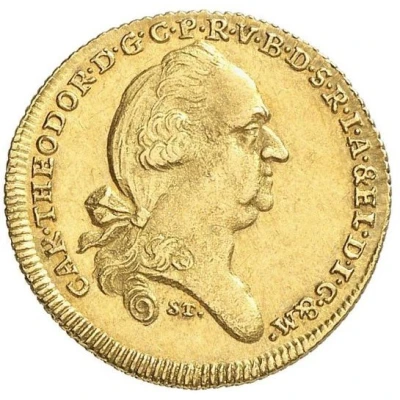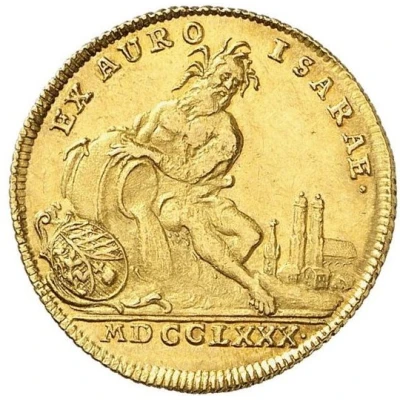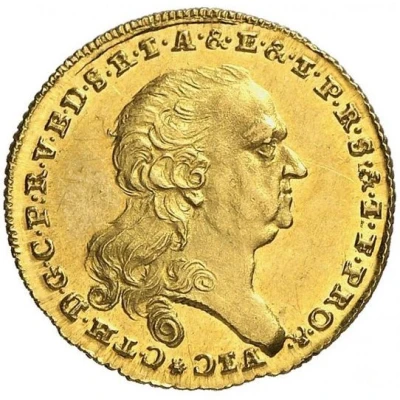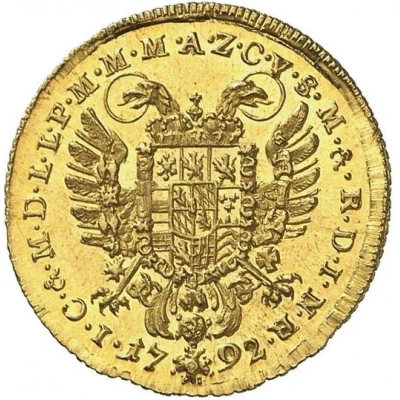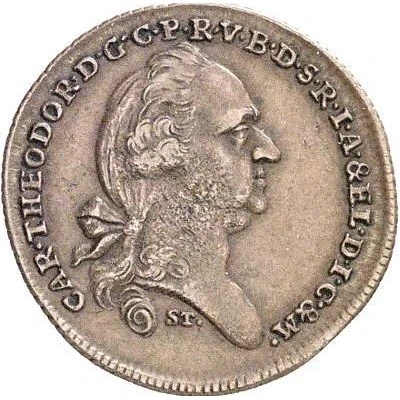
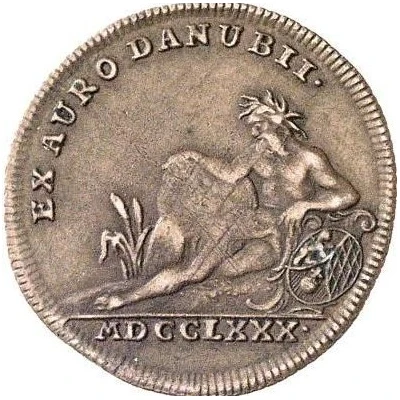

© Leu Numismatik
1 Ducat - Charles Theodore Donaugold-Dukat - Copper Pattern
1780 year| Copper | - | - |
| Issuer | Electorate of Bavaria (German States) |
|---|---|
| Prince elector | Charles Theodore (1777-1799) |
| Type | Pattern |
| Year | 1780 |
| Value | 1 Ducat (1 Dukat) (3.5) |
| Currency | Conventionsthaler (1753-1806) |
| Composition | Copper |
| Shape | Round |
| Orientation | Medal alignment ↑↑ |
| Demonetized | Yes |
| Updated | 2024-10-05 |
| Numista | N#266783 |
|---|---|
| Rarity index | 97% |
Reverse
River god seated left
Script: Latin
Lettering:
EX AURO DANUBII
MDCCLXXX
Interesting fact
One interesting fact about the Pattern 1 Ducat - Charles Theodore (Donaugold-Dukat - Copper Pattern) 1780 from Electorate of Bavaria (German States) made of Copper is that it was minted during a time of great economic and political change in Europe. The coin was issued during the reign of Charles Theodore, who was the Elector of Bavaria and a key figure in the Holy Roman Empire. The coin's design features an image of Charles Theodore on one side and the Bavarian coat of arms on the other, symbolizing the close relationship between the ruler and his territory. The fact that the coin was made of copper is also significant, as it reflects the economic conditions of the time. Copper was a less valuable metal than gold or silver, but it was still a valuable resource that was used extensively in coinage during this period. The use of copper in the production of this coin suggests that the mint was experimenting with different metals and techniques to create currency that was both durable and affordable. Overall, the Pattern 1 Ducat - Charles Theodore (Donaugold-Dukat - Copper Pattern) 1780 from Electorate of Bavaria (German States) made of Copper is a fascinating example of the complex and evolving nature of currency production during this time period.
